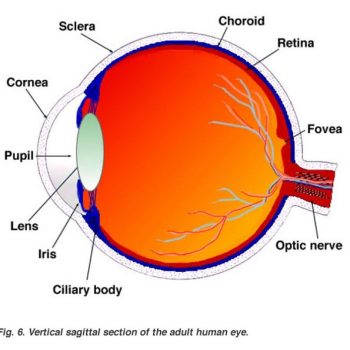The eye is incredibly complex and knowing how the human eye works will give you a better understanding of how delicate this organ is. This section will give you a detailed understanding of how the parts of the human eye work. Good vision depends on the way in which those parts work together.
The eye is made up of three parts:
- The cornea and lens focuses light to the front of the eye.
- The retina is a light focusing film at the back of the eye.
- The optic nerve connects each eye to the brain.

Parts of the eye Definitions
Cornea: the transparent outer portion of the eyeball that transmit light to the retina.
Retina: the inner layer of the eye containing light-sensitive cells that connect with the brain through the optic nerve. It also contains retinal blood vessels which feed the retina and which can be affected by diabetes.
Optic Nerve: carries messages from the retina to the brain.
Iris: the coloured, circular part of the eye in front of the lens.
Pupil: is an opening located in the center of the iris of the eye that allows light to enter the retina.
Lens: located in the middle of the eye behind the pupil, the lens brings rays of light into focus on the retina.
Aqueous Humor: is the fluid normally present in the front and rear chambers of the eye. It is a clear, watery fluid that flows between and nourishes the lens and the cornea.
Fovea: the pit or depression at the center of the macula that provides the greatest visual acuity, most acute vision.
Vitreous Humor: a colorless mass of soft, gelatin-like material that fills the eyeball behind the lens.